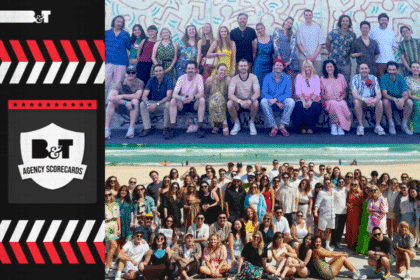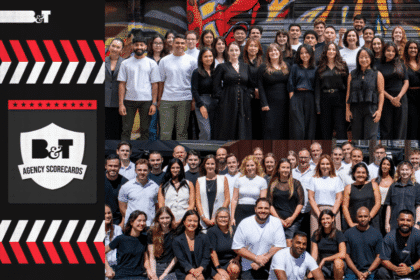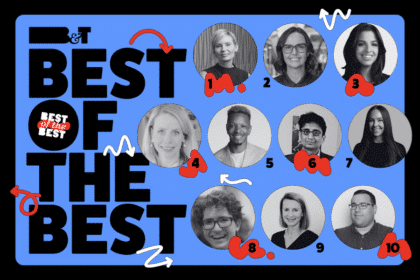Agencies need a new model, as the current one is too expensive and ineffective. This will be the year it all changes, argues Jason Dooris, CEO of media agency Atomic212.
Many agencies have lost their way. Many have failed to maintain relevance, are too expensive and have lost their edge. However, agency leaders – not everyone, but a large mass – seem blissfully unaware of the dramatic scale of change going on around them.
Agencies scramble to prop up regimes that have simply lost connection with their customers, big agency CEOs have gone AWOL around the big issues and questions, and we continue to charge clients using remuneration models developed in the sixties. Customers have moved on, but the industry has not.
But it will in 2016. This is the year that everything will change, the year where there will be no place to hide for the stagnant. The new model agency will step up or step out. In a world where agency silos are rife and where the capabilities and services of agencies continue to expand and fracture, the businesses that succeed will be those that centralise their offer are streamlined KPIs, single P&Ls and effective internal account management processes and systems.
The past 18 months
We are entering the eye of a consumer storm. In meteorological terms the eye of a storm is the region of mostly calm weather found at the centre of strong tropical cyclones. An area preceded by great turbulence, uncertainty and devastation. This devastation is clearly reflected in the movement of client business, the mass departure of agency leadership across the industry, an erosion of trust in agency partners and a general feeling that 2015 was a very hard year on many people. How agencies emerge from the eye of the storm is up to those respective businesses and their leadership teams.
There are many contributing factors to the current demise of agencies, or at least agency models.
Technology continues to drive massive fragmentation of consumer media consumption. Agencies and the media have scrambled to keep up in meeting consumption habits and developing effective client media solutions. Agencies began by building verticals, silos and specialist capabilities such as digital, search, mobile, social or more recently – programmatic. But technology and innovation emerge relentlessly, such that more and more vertical silos are needed constantly to meet new demand. This has paved the way for smaller one-man specialists to compete with the biggest agencies in town, driving down costs to unsustainable levels for the bigger agencies, and occasionally driving behaviours best left unseen. The smaller agencies get snapped up by the bigger agencies which are trying to maintain momentum. The rest is history.
What does the future agency look like?
One successful model for the agency of the future is a slimmed down, streamlined network of three core creative media companies ring-fenced by a central communications advisory and management business (CCAMB).
The creative media companies are not vertical silos. Vertical silos are industry killers in disguise. The creative media companies are agencies or divisions defined by broad territory of expertise – there is no room for media verticals. The territories are:
- CCAMB: Client service and management.
- Strategy: Pioneering thinking and problem solving
- Performance media: Driving retail outcomes
- Brands: Driving brand outcomes
You could call this the Uber effect – clients want the same service as passengers, a service that is reliable, on brand and relevant at that given moment in time. They want one platform to make that happen for them, the Uber App or in the case of the future agency model the CCAMB.
The glue that integrates the divisions and capabilities together is the CCAMB. Yes that’s right. It’s that simple and it’s unbelievably functional.
But isn’t that exactly what we have now? In theory yes, but in practice no, which is why the agency world hurts so much, why clients are so frustrated and why nobody is making any money, at least not in the ways they should be. Agencies don’t actually have central control, and certainly not in an integrated fashion. We have separate P&Ls, separate businesses and separate agendas. We call it integration when it is in fact disintegration. It is this disintegration that has paved the way for management consultants and small start-ups to move into the traditional zones of marketing companies with such ease. They are very good at central management and neutrality is second nature. There are lessons to be learnt here.
Exactly what does the CCAMB do? It completely and entirely owns and manages the client’s business and the agency group’s business, with centralised control over P&L. The multiple chains of client service relationship increase costs and complexity, and create tension and disintegration. It is impossible to expect an agency to own the client relationship on behalf of other agencies and businesses with whom it does not share direct financial and P&L accountability. There will be readers now saying to themselves that this is simply a description of an account management function, but that is just the point, because a lack of ability to manage integrated, media neutral outcomes for clients is holding the industry back. There is a structural issue, not a creative one, and structural issues cost everyone money.
Think of the future agency model in the same way you would a truck full of stationery en route from the stationery shop to a customer. In the current model if the customer orders stationery a truck arrives to deliver the rubber, another to deliver a pen, another to deliver a ruler and so forth. The ruler, pen and rubber all look different, the rubber doesn’t rub out ink and the roads are jammed with trucks. The combined delivery cost is more than the cost of the stationery. It just doesn’t make sense. A central advisor and account management service works much better and saves costs that can be deployed in far more effective ways.
The good news is we have started to see the semblance of this structure developing across many agency groups. The bad news is none appear to have supported these developing divisional themes with internal centralised profit centres.
Agency divisions continue to compete with each other and do not work cohesively. The winners in 2016 will be the ones that do.








